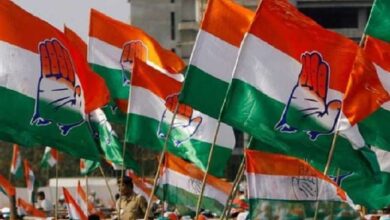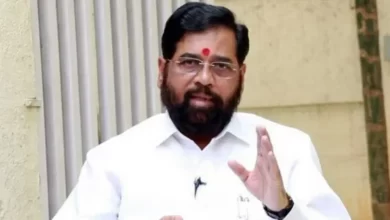In this era of price erosion

[ad_1]
Navneet Sharma
The discussions about ethics and ideals are getting complicated day by day. This complexity is not philosophical, but sociological and political. The day of October 2 shakes us to explore these two words in their interpretation and contemporaneity. Gandhi’s morals and Lal Bahadur Shastri’s ideals, like Takshund’s agreement and episode, have become incomprehensible and mysterious. The study and teaching of ethics and ideals has been confined to examinations and interviews, perhaps because of the ever-unanswered question of which morality and whose ideal.
We are tempted by the twentieth century to exemplify ethics and ideals in the classroom of the twenty-first century. Why there is a famine in the twenty-first century, it is the subject of another research. Ethics and ideals in literature range from the blatant refusal of the hero of Munshi Premchand’s ‘Namak Ka Daroga’ to accept the bribe and face the consequences, to the end of the month by the hero of Harishankar Parsai’s ‘Taweez of Virtue’. Traveled till accepted. The departure points of Gandhi and Shastri’s ethics seem medieval in the dichotomy between global and individual morality.
Gandhi is an advocate of non-violence in the midst of two world wars and Shastri advocates simplicity in the midst of the grandeur of independent India. Gandhi asks to think about the last person in the row before arriving at any decision and Shastri exemplifies the idea of taking the oath of Prime Minister by wearing a thong in a torn dhoti. Both talk about removing that public-social illusion that diamond is beautiful only in red paper. Both are examples of that story of struggle, where ordinary people born in an ordinary family not only reach an extraordinary point, but aim to take everyone there.
The imminent crisis on morality and ideals is not only because of its famine in the political leadership, but it is also a crisis of social and educational discourse. The rapidly changing values and patterns are not only a matter of competition between the modern and the modern, but also due to the constant revision of identity and the process of its creation. When does a man choose his ideals and whether they are influenced by any moral philosophy or they are formed in childhood and follow them throughout life. In the absence of ideals like Gandhi Darshan and Shastri, what model are we serving to the next generation?
How the child constructs that ‘should speak the truth’ is a must, but is bookish knowledge, not for everyday use. Why don’t we choose a side in public life, even if it makes us like Karna, why a law has to be made for defection. Why are the elected representatives surrounded and forced to remain in their own party?
We have lost that Gandhian norm of morality, under which one has to give up the habit of eating jaggery himself before exhorting someone else not to eat too much jaggery. Instead of eating jaggery, we have made the hypocrisy of avoiding dumplings a moral standard. Gandhi used to say that my life is my teaching, but now we have started distinguishing between teaching knowledge and exemplary knowledge, distinguishing between ideal and practical truth. Gandhi stuck to the philosophy he chose for life, even though it was heavily criticized both during his time and after him. Gandhian ethics envisages a moral man who is religious, but not fanatic.
Gandhi’s moral philosophy teaches us to be more moral than to be sympathetic to him, without creating a fearful image of God beyond the theological morality. No man should be moral just because someone (God!) is watching him. Gandhi’s concept of truth and morality is not gross, in which only karma should be tested, but there should be no immorality in mind and thought. Only the irreligious man will reach the level of all religion, otherwise which religious morality is superior and whose God is more fruitful, this competition will only promote communalism. Gandhi’s moral man is essential to be bold and transparent, non-violence relying more on courage and boldness than on violence. Gandhi uses satyagraha, non-violence, civilisation, khadi, goat as his weapon to fight the colonial empire. This philosophy was pervasive in the light of his beliefs, in which Swaraj and independence are not about immoral turmoil, but self-directed discipline and the spirit of public service.
We have forgotten the moral values built up in the hundred years of movement for independence in just seventy years. Humans in the bright clothes of Khadi now indicate to be conscious of their cunning instead of reverence. Simplicity has been taken as backwardness and integrity as foolishness. Despite being indispensable in the twenty-first century, Gandhi has come to be termed as unnecessary. In the education discourse and in the classroom, the crisis gets even worse when a professor makes an arrogant claim that we are Godse worshippers.
Shastriji considered it better to be Lal Bahadur Shastri than Lal Bahadur Verma according to Gandhi’s understanding. In just six decades, the Prime Minister, who struggled for a car loan, has been displaced by all the crorepati members in Parliament. The introduction of Rajdharma and morality with which Shastriji resigned from the ministerial post on the train accident at Ariyalur is endangered in the politics of the twenty first century. The leadership is now in the race for new vehicles and airplanes, against Shastri, who completed his prime ministership with two dhotis. This was considered ‘obscene’ behavior in Indian society five decades ago. It is still obscene in the country with the world’s most hungry population, but now this obscenity has been accepted as a reward for serving the country.
Gandhi and Shastri Jayanti needs to be made a day apart from just another public holiday, when we try to make the vision of the future Indian society a reality by debating and debating morality and ideals. Otherwise, in the twenty-first century, we are able to teach examples of moral purity and ideals of personalities like Gandhi and Shastri of the last century; in the twenty-first century, perhaps imported examples will have to be taught in the moral education classroom.
In a tussle with Gandhi’s recitation and Shastri’s imitation, Sarveshwar Dayal Saxena wrote – ‘Gandhi’s goat, tied in the backyard of the house, is a hoax, so there is the sound of firing from somewhere.’ October 2 is a sign of dawn, not of middle-class exodus, ‘Because if you go out in the dark, it is not dark’, and ‘if some coals smolder, the rest of the wet coals also catch fire’. We just need to give air to the bonfire of Gandhi and Shastri’s wet morals and ideals, otherwise communalism and marketism are bound to consume us.
The post In This Age Of Price Erosion appeared first on Jansatta.
.
[ad_2]






